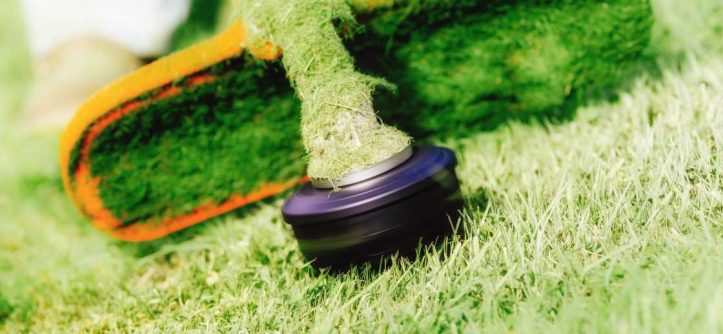A weed trimmer, also known as a string trimmer or weed eater, is an essential tool for maintaining a well-manicured lawn and keeping pesky weeds at bay. This versatile tool is designed to reach areas that lawnmowers can’t, such as around trees, fences, and along the edges of driveways. Whether you’re a seasoned gardener or a novice, learning how to use a weed trimmer effectively can greatly enhance the appearance of your yard. In this guide, we’ll walk you through the step-by-step process of using a weed trimmer safely and efficiently.
There are 10 Process of Using a Weed Trimmer Safely
Choose the Right Type of Weed Trimmer
Before you begin, it’s important to choose the right type of weed trimmer for your needs. There are two main types to consider: gas-powered and electric (corded or cordless) trimmers. Gas-powered trimmers offer more power and mobility, making them suitable for larger yards. Electric trimmers are quieter and require less maintenance but are better suited for smaller yards.
Safety First
Using a weed trimmer involves rotating parts and potentially sharp edges, so safety should always be a top priority. Here are some safety precautions to follow:
- Wear protective clothing, including safety goggles, long pants, closed-toe shoes, and ear protection if the trimmer is loud.
- Clear the work area of obstacles like rocks, sticks, and debris that could be thrown by the trimmer.
- Check the trimmer for any damage before use and ensure that all guards and safety features are in place.
Choose the Right Trimming Line
The trimming line is what does the cutting in a weed trimmer. Make sure you’re using the appropriate line thickness and type for your trimmer. Thicker lines are better for tougher weeds and thicker vegetation, while thinner lines are suitable for lighter trimming.
Adjust the Trimmer for Comfort
Most weed trimmers have adjustable handles and shafts. Adjust the trimmer’s length and handle position to ensure a comfortable grip and proper balance while trimming.
Start the Trimmer
If you’re using a gas-powered trimmer, ensure that you have a full tank of the appropriate fuel mixture. Electric trimmers should be fully charged or plugged into a power source. Follow the manufacturer’s instructions for starting the trimmer, which usually involves a combination of priming, choking, and pulling the starter cord.
Hold the Trimmer Correctly
Hold the trimmer with both hands – one hand on the handle and the other on the shaft. Keep a firm grip and maintain proper balance throughout the trimming process.
Begin Trimming
Approach the area you want to trim from the side, and start trimming at the lowest point. Hold the trimmer head slightly above the ground to avoid hitting rocks or other hard objects. Work in a sweeping motion, moving the trimmer from side to side. Overlap each pass slightly to ensure even trimming.
Edge Carefully
To edge along driveways, sidewalks, and other hardscapes, turn the trimmer vertically and use the edge of the cutting line to create a clean boundary between the grass and the hardscape.
Watch for Obstacles
Keep an eye out for obstacles like tree roots, rocks, or garden decor as you trim. The trimming line can cause damage to these items if not handled carefully.
Maintain the Trimmer
After use, clean the trimmer cutting head to remove grass and debris buildup. Regularly inspect the trimming line for wear and replace it as needed. Proper maintenance will ensure the trimmer’s longevity and optimal performance.
FAQs
How do I choose the right type of weed trimmer for my yard?
The choice between a gas-powered and an electric (corded or cordless) trimmer depends on the size of your yard and your personal preferences. Gas-powered trimmers offer more power and mobility, making them suitable for larger yards with thicker vegetation. Electric trimmers are quieter, require less maintenance, and are ideal for smaller yards. Consider factors like the size of your lawn, the type of weeds you’ll be tackling, and your comfort level with maintenance when selecting the right trimmer for your needs.
Can I wear regular clothing while using a weed trimmer?
It’s recommended to wear protective clothing to ensure your safety while using a weed trimmer. Safety goggles will shield your eyes from debris, long pants will protect your legs from flying debris and contact with the trimmer line, closed-toe shoes will guard your feet, and if the trimmer is noisy, ear protection is advisable. These precautions are crucial for preventing potential injuries and ensuring a safe trimming experience.
How should I maintain my weed trimmer for optimal performance?
Proper maintenance is essential to keep your weed trimmer in good working condition. After each use, clean the cutting head to remove grass and debris buildup. Regularly inspect the trimming line for wear and replace it if it’s frayed or damaged. Additionally, follow the manufacturer’s guidelines for scheduled maintenance tasks, such as checking and changing the oil (for gas trimmers), cleaning or replacing air filters, and keeping the spark plug in good shape. Regular maintenance will prolong the life of your trimmer and ensure it operates at its best.
Conclusion
Mastering the art of using a weed trimmer takes practice, but by following these steps and prioritizing safety, you can achieve a well-groomed lawn with ease. Remember to choose the right trimmer for your yard, wear appropriate safety gear, and maintain the trimmer regularly. With these tips in mind, you’ll be able to tackle overgrown areas and maintain the edges of your lawn effortlessly.
Tags: using a weed wacker, weed wacker how to start, weed wacker use, weed whacking tips




Leave a Reply